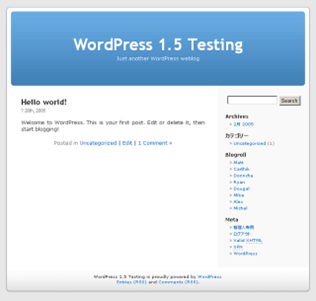Blog off! Refreshing the public history blog
History journal blog

Refreshing the public history blog
Image: Social media sites have provided a platform for fierce debates about the statues of slave traders such as Edward Colston.
Even if we think the so-called ‘culture war’ is an overinflated red herring, there’s no denying that some of the fiercest debates about history are occurring online. Contests over the legacy of empire, gender history, and the roots of capitalism are being played out on social media platforms. Bitesize, 148 character-commentary is often supported by links to blogs – the extended footnotes of the Twitterverse.
History degrees now routinely include blog assessments – a natural response to this relocation of the historical conversation to digital spaces. Blogs make an implicit claim to the democratisation of historical knowledge – they represent an attempt to extend the modes, style, agents and authors of history. Helen Rogers suggested in 2015 that blogging ‘has the potential to “turn history upside down” by breaking down traditional hierarchies separating amateur and professional, young and old, theorist and practitioner, reader and writer.’
Rather than debating whether the blog is a good or bad format for historical communication, I intend to probe into the deeper political and pedagogic assumptions behind uses of the genre by historians. Which ‘publics’ are being imagined as the audiences of public history blogs? If Rogers is right in saying that blogs can ‘turn history upside down’, then who is benefitting from this topsy turvy approach to the past?
Blogging the past
As Amanda Zantal Wiener has shown, blogging has a contested and convoluted history. The original ‘weblog’ authors of the mid-1990s, generally concerned with technical topics and sharing links to other resources, were supplanted by a new generation of users at the turn of the millennium. Online resources such as Open Diary, Blogger, LiveJournal, Xanger, TypePad and WordPress enabled a growing community of web users to tell us what was on their mind. Historians were quick to take advantage of this opportunity. A Canadian PhD student at Harvard, Rob MacDougal, is thought to be the first historian to venture into blogging, publishing a post on 25 January 2001 that bemoaned inaccuracies of the citation software Endnote. Blogs by historians seeking to engage wider audiences soon followed, with Esther McCallum-Stewart’s Break of Day in the Trenches and Rebecca Goetz’s Historianess launching in 2002.

Original WordPress interface from 2005
Today, the history blog is far from a codified genre. Traditional institutions of the historical profession – university departments, archives, museums, journals – all publish blogs, often managed by a dedicated social media editor or even team. Many academic historians produce personal blogs – a few favourites include Matt Houlbrook’s intimate reflections on the practice of writing history, Rob Saunders topical commentary of the value of history in contemporary politics, and Dion Georgious’s experimentation with ongoing research. These bloggers continue a linage of academics from the early 2000s who turned to blogs to engage new audiences with their ideas. The sociologist Mark Fisher used his blog K-PUNK as a means through which to workshop and finesse concepts of capitalistic realism, Acid Communism and hauntology. As Hua Hsu suggests, Fisher was writing in a period when ‘blogging seemed like a distinct genre of writing and thinking’, offering academics an open forum through which to explore ideas which were marginalised within peer-reviewed academic spaces. Blogging appeared to hold a radical and disruptive potential. Scholars like Fisher helped forge what Adam Crymble describes as an ‘imagined community of digital humanists’ – a relatively short-lived network of academics who thought collectively and across disciplinary boundaries.

Mark Fisher, 1968-2017
History blogging as an assessment tool
The academic’s personal blog is perhaps the closest in form to what we ask our students to produce – put aside the conventions of academic style for a second and translate your intellectual work into accessible content for a non-specialist audience. The rise of the blog assessment has come hand-in-hand with the rise of ‘public history’ as a field of expertise. Over the last ten years, public history MAs have sprouted up all over the country, with departments falling over themselves to pursue public-facing, skills-orientated teaching. On these courses, the blog has become the go-to alternative to the essay. Blogging develops similar core skills to essays – the ability to analyse sources, present a clear argument, write fluently – but also emphasises engaging wider audiences, capturing attention, creative use of multi-media and addressing that key question of ‘what’s the point?’. In many ways, the history blog is as much a product of the late-modern, neo-liberal university as the ‘history from below’ movement of the 1960s – an exercise which promises to develop transferable skills and make students competitive in the attention economy.
Who reads history blogs?
One of the primary goals of public history blogging is to reach a wider, non-academic audience. So who are these intended public audiences? I ran a survey on student experiences of blog assessments through an anonymous digital questionnaire. Students overwhelmingly tended to imagine themselves as their public – when asked who they were writing for, they spoke of ‘someone like myself’, ‘like-minded people’, and ‘someone my age’. Clearly the blog is thought of as a tool for engaging with younger generations. But when asked if they read history blogs beyond their degrees, or whether this had changed during their degrees, the answer was a resounding ‘no’. In part, this might be about blogs not always being identified as ‘blogs’ – ‘platforms’ or ‘publications’ or ‘content’ being alternative labels – but it’s apparent that text-based online history is not reaching younger audiences.
If students are viewing themselves as the audience of their blogs, while also being conscious that this is something of a false premise (those between 40-60 are in fact the most avid blog readers), to what extent is the blog assessment achieving its goal of developing a more creative and inclusive approach to communication? It becomes vital to prompt the students to challenge their image of the audience, just as Roberta Biven’s does by including an ‘audience statement’ component in her blog assessment. But the cultural identity of the history blog also brings with it certain associations. One student commented:
‘History blogs are supposed to be different from books and articles, but they don’t seem that different to me. Blogs are written for the same people who read history books – white, middle-class people.’
A study of US students found that an ‘educational gap in blogging’ along class and racial lines ‘persists, rather than narrows, even among people who are online’. The blog might be a slightly dated genre now, but similar questions could be raised about the audiences of history podcasts, magazines, zines, exhibitions, and art installations.
Blogging as a gateway to inclusive pedagogy?
When considered alongside perennial issues of digital accessibility and disenfranchisement, it might be time for us to think more critically about the inclusive credentials of the blog. I’m not calling for us to do away with blogs all together, but there is a need to rethink the claims we make to our students about blogging. To some extent, this is about doing more to unpack highly freighted and potentially exclusionary terms in marking criteria such as ‘creative’ and ‘innovative’. It’s also about allowing students to disrupt the public history blog as a genre. Experimentation with form and style, community blogging, and ungrading offer some indication of future directions, but it's our students’ generation who will ultimately determine the fate and shape of tomorrow’s history blog. Finding ways to encourage students to rekindle the radical potential of blogging is a mission which will not only benefit their learning, but could also provide a vital shot-in-the arm for the wider historical discipline. I’d certainly be interested to see how this blog, composed in its conservative, marking-criteria-friendly style, could be reloaded into a format that transgresses the conventions of historical communication.
A revised version of this blog post is available on the RHS website: Who reads history blogs? | Historical Transactions (royalhistsoc.org).

